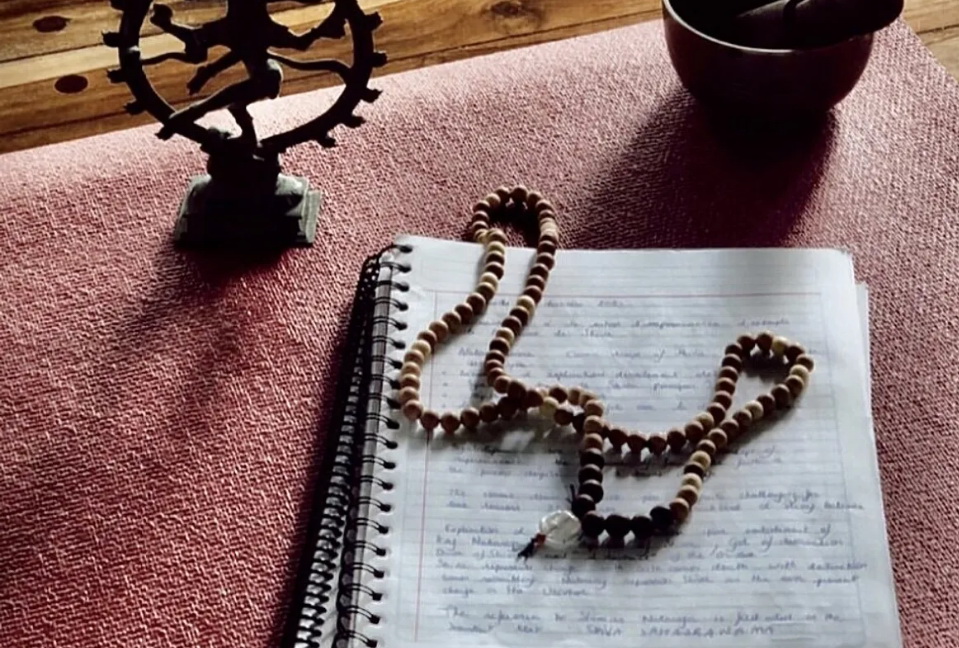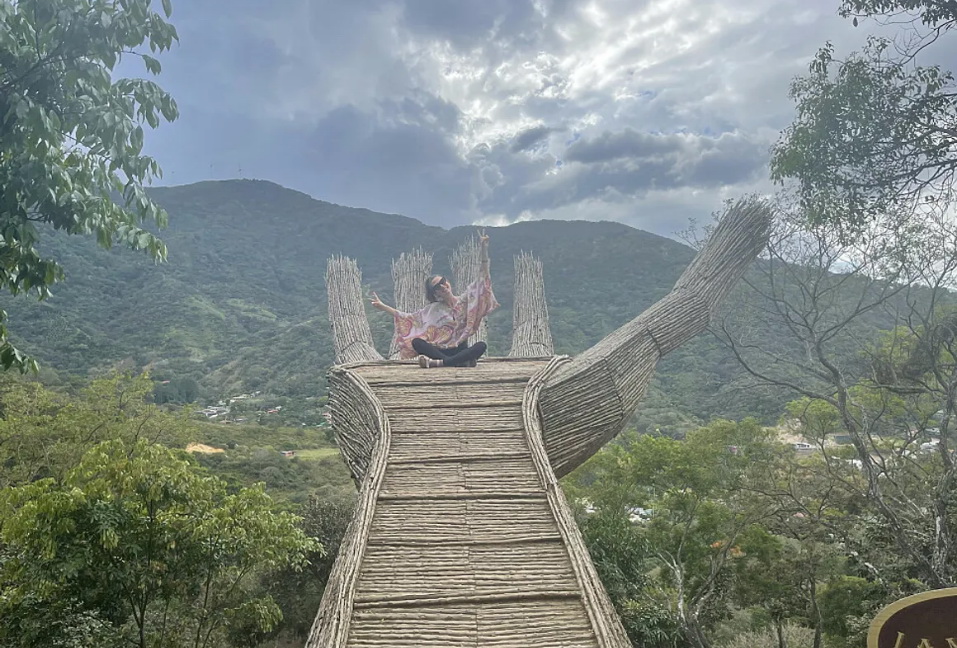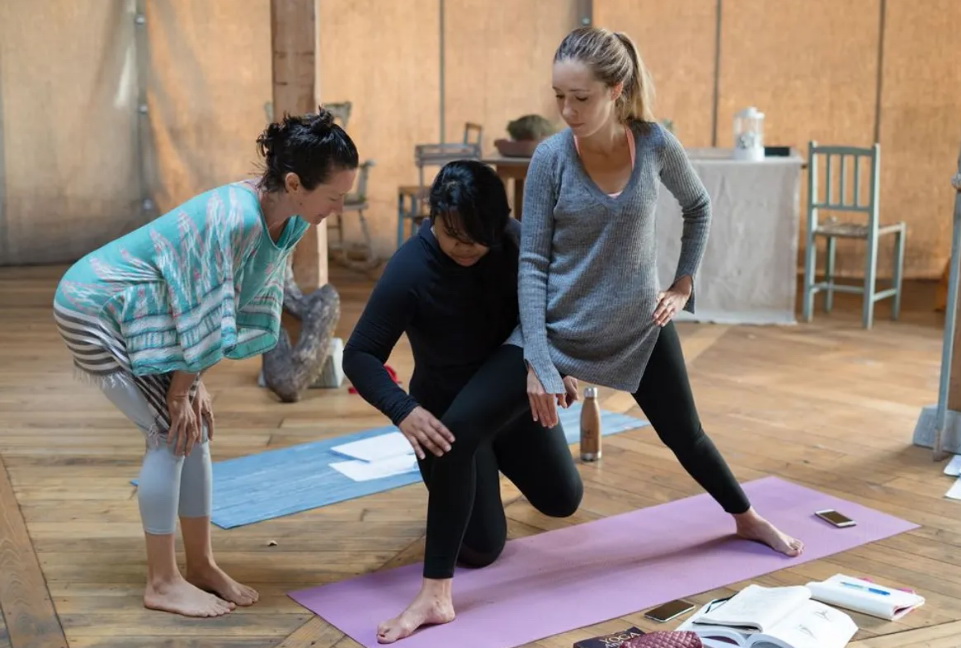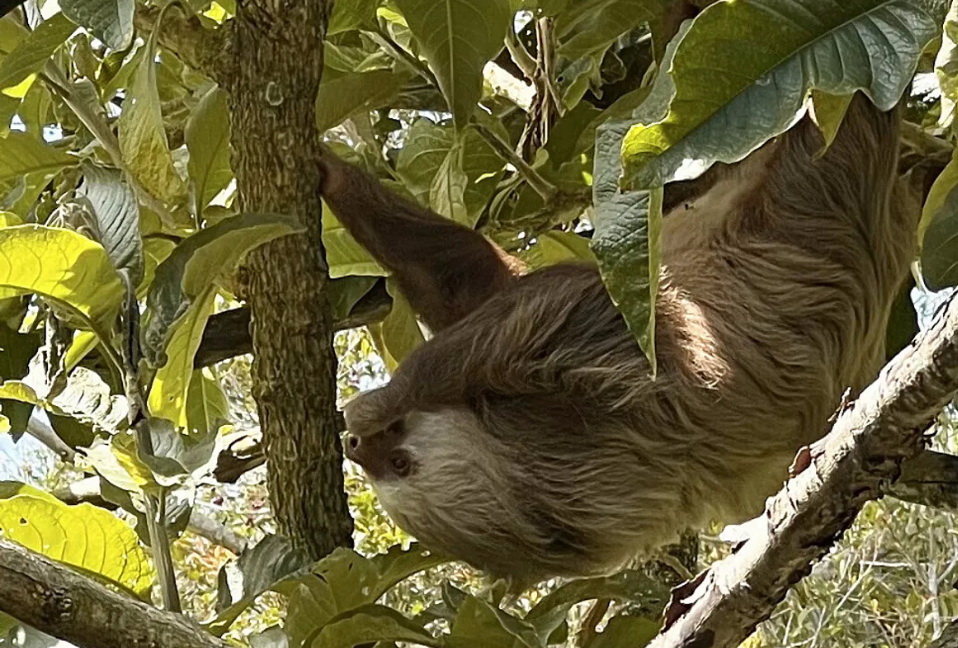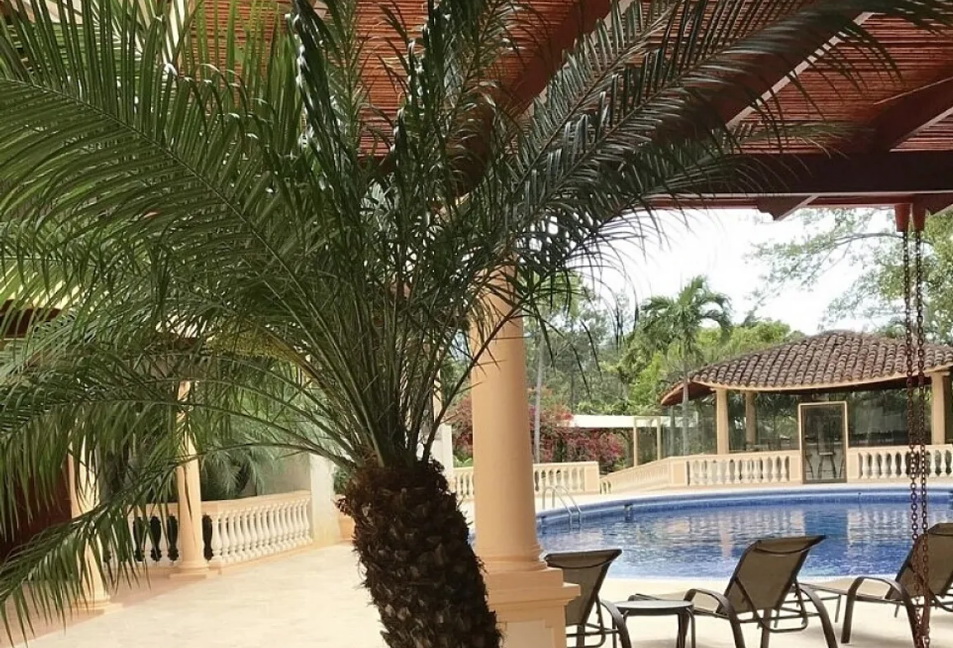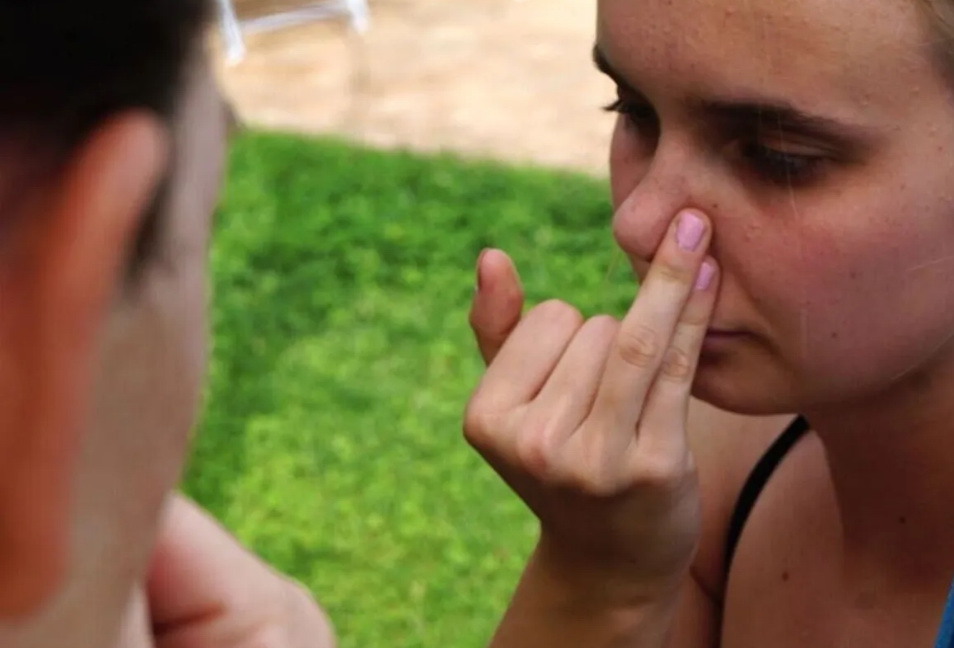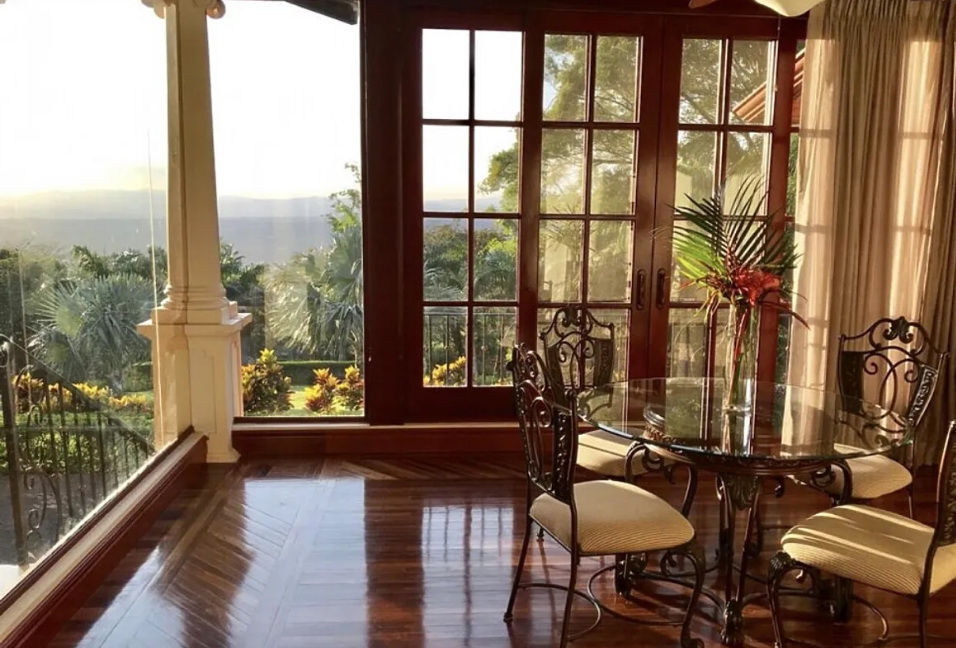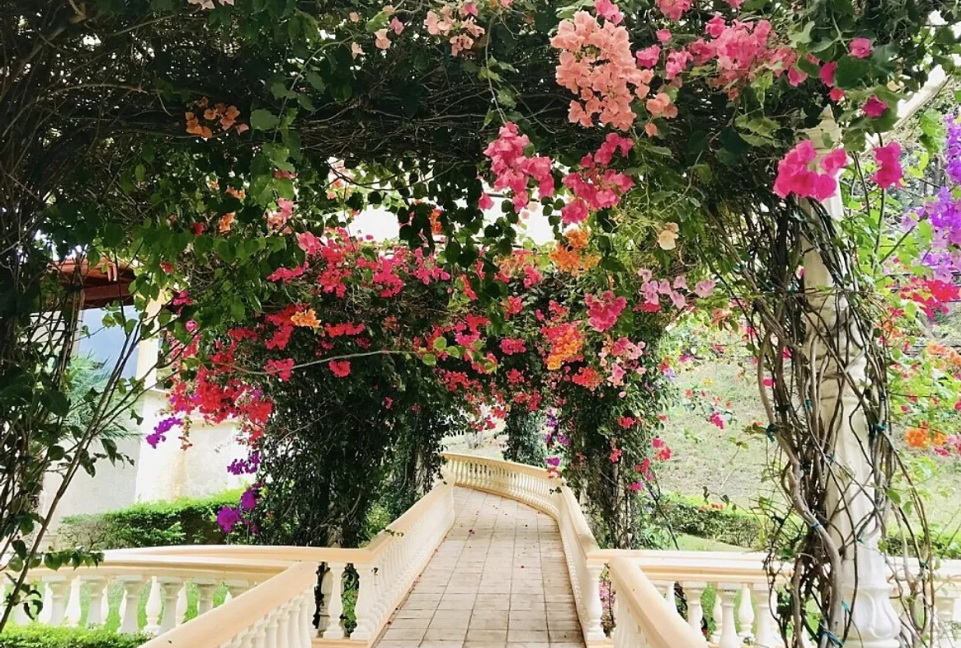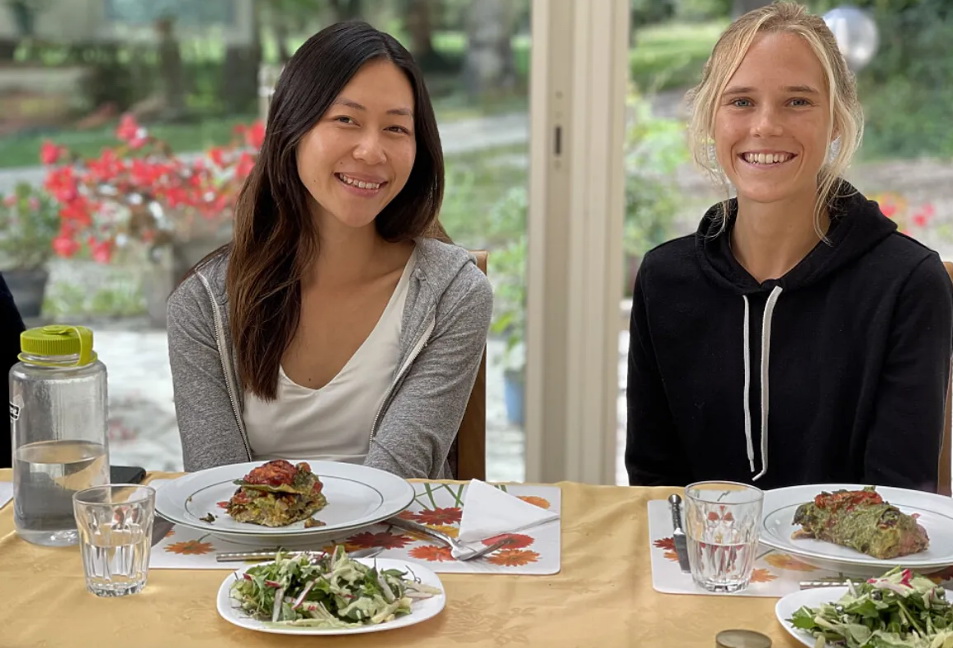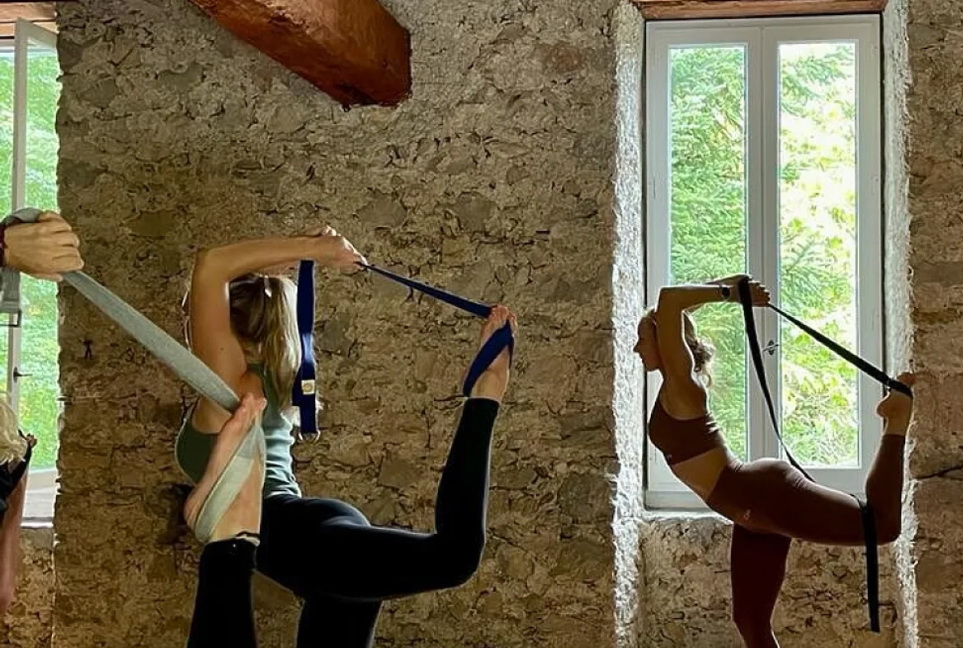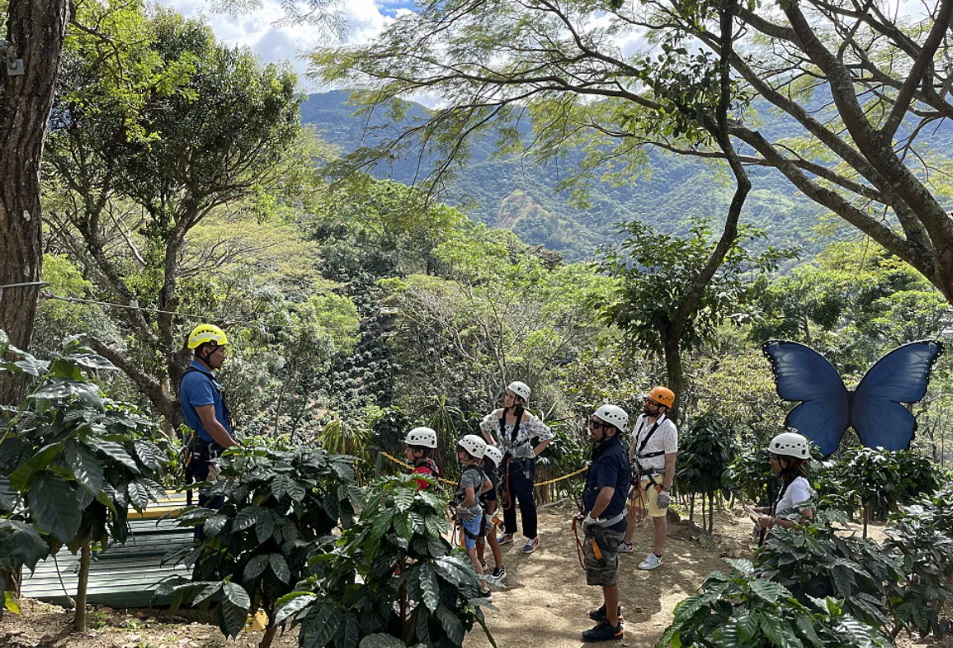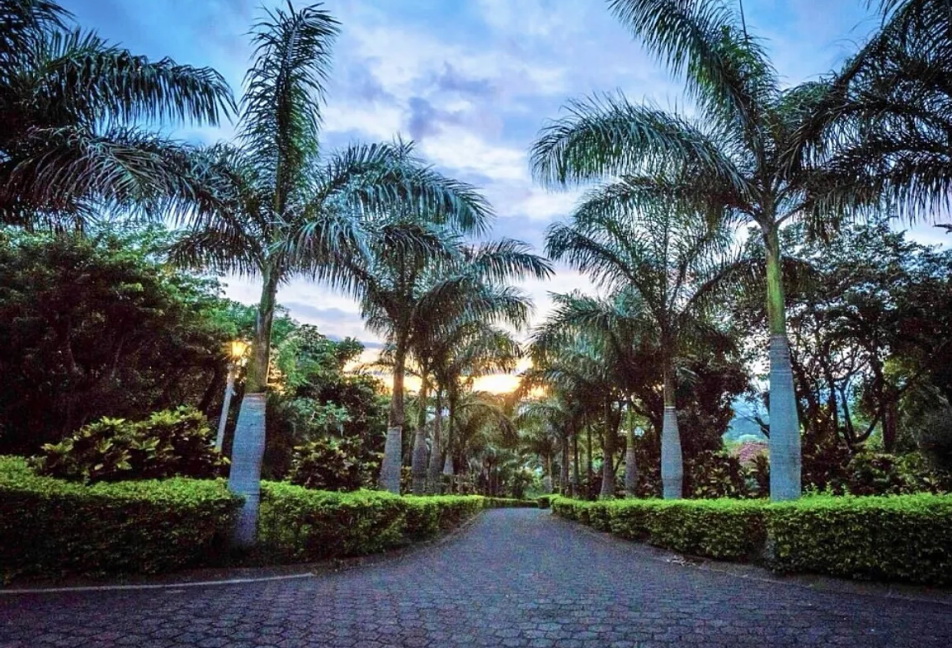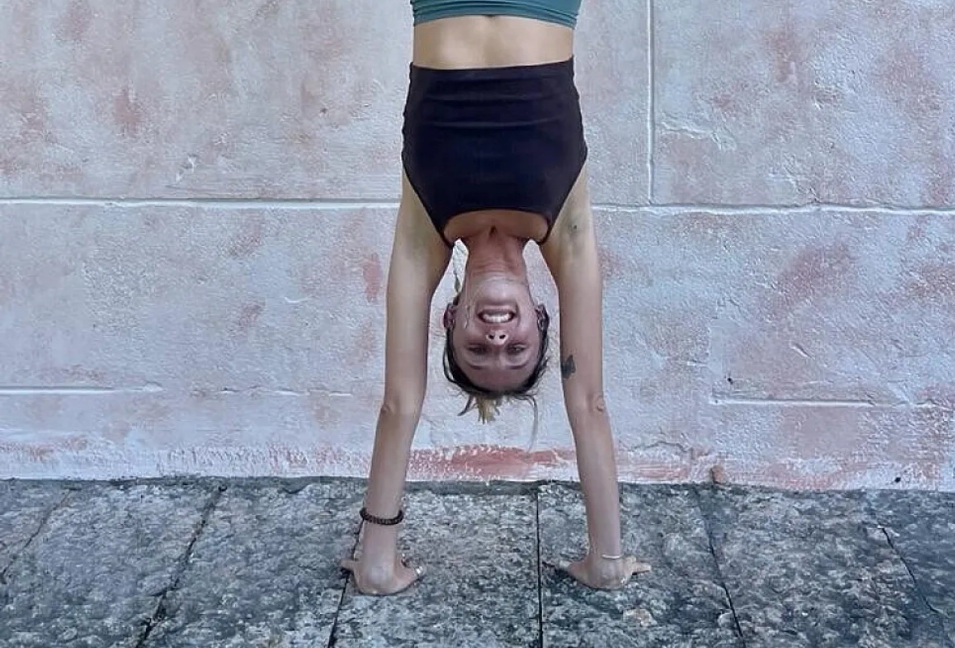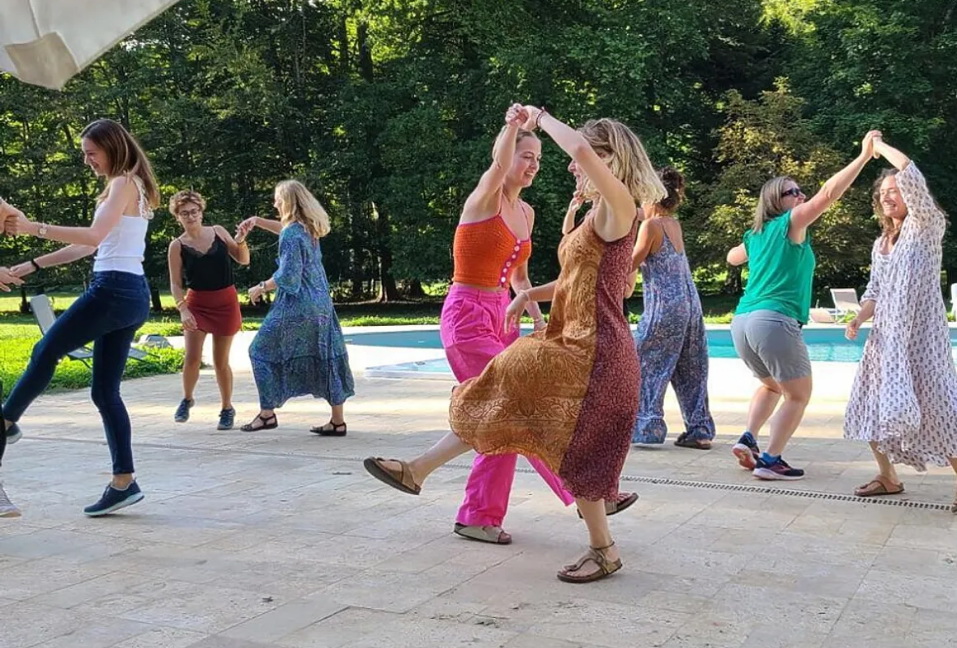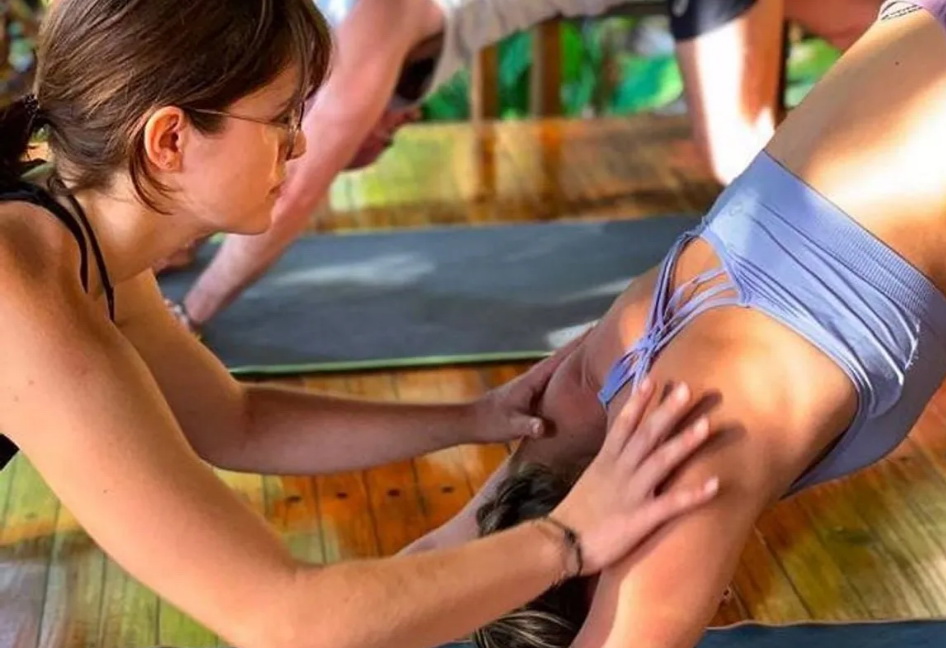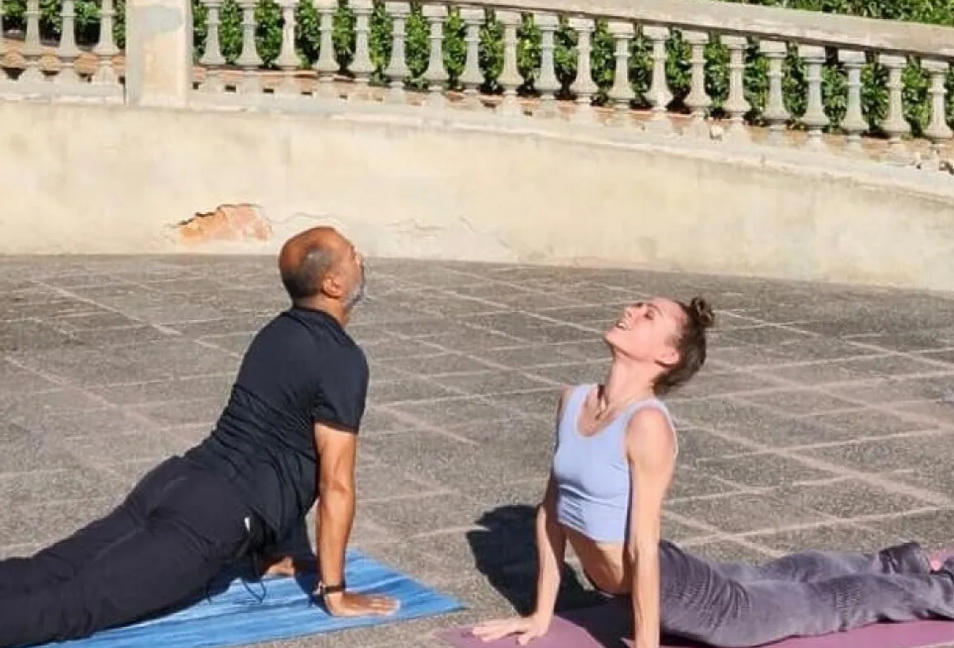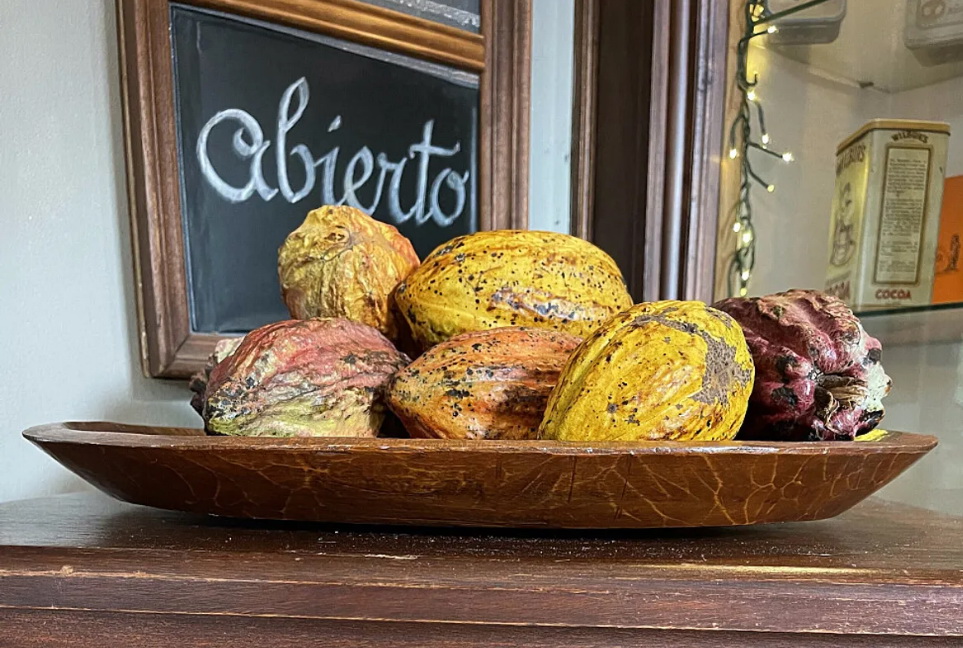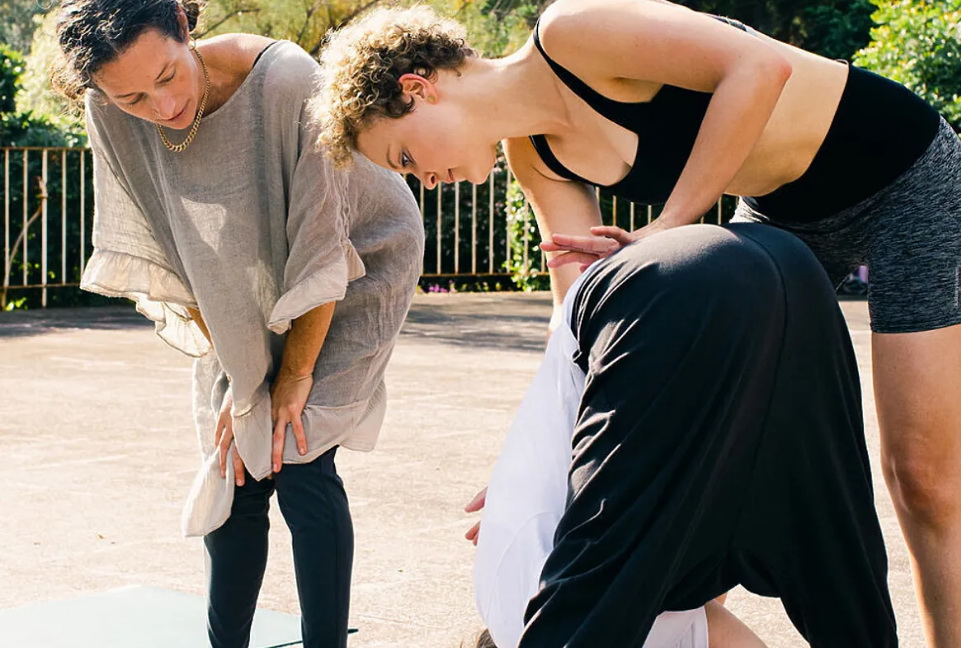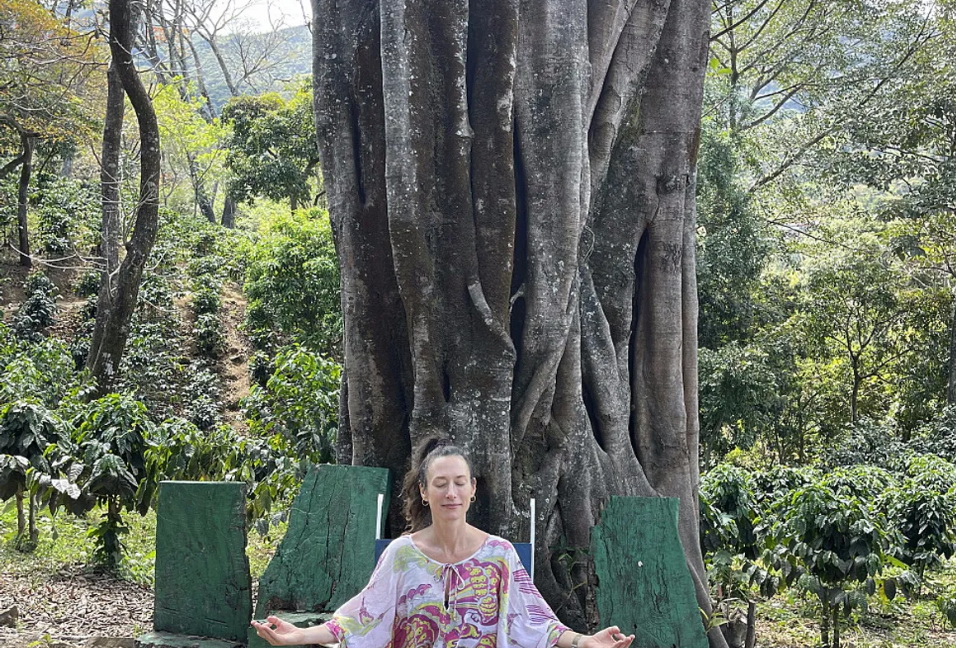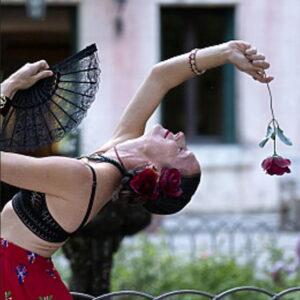-Certifications
Students who complete their training are eligible to register with Yoga Alliance as Registered Yoga Teachers (RYT®).Claim your spot on this powerful journey. This is the beginning of your adventure of life infused with Vinyasa, meditation, mantra, ritual, Ayurveda, and dance, the Lakshmi Rising Yoga Teacher Training program is one of the most unique and transformative anywhere in the world.
-The Program
Lakshmi Rising Vinyasa yoga is an awareness-based practice that includes fluid, dynamic asana, kriya, pranayama, mantra, meditation, dance, wellness, self-care, and ritual for health and awakening.This approach is a revitalizing laboratory for uniquely experiencing and expressing self while mindfully honoring whatever exists in each present moment. This practice cultivates mental, physical, and spiritual strength and flexibility so that you are able to recognize and transform habits, patterns and conditionings that cause suffering in any way.You will use the mat as a metaphor to understand where you are stuck so that you can eliminate that which does not enhance the unfoldment of your individual and collective evolution.This 200-hour yoga teacher training intensive immersions in Costa Rica gives you three weeks to focus on your yoga practice with other curious, interesting people from around the world.It’s a time for you to enjoy life while learning about the timeless tradition of yoga, cultivating true health and happiness and making new friends. Investing in a yoga teacher training certification program is a life enriching experience even if you have no intention of teaching.This training program is open to people at all levels of experience and the organizers can’t wait to share this unique program with you! Below is a sample schedule that will give you a great idea of what your three weeks will look like while enjoying your training.
Sample Schedule
Below is a sample schedule subject to slight changes depending upon the location, duration & excursions if applicable. This will give you a general idea of what your two or three weeks will look like while enjoying your training!
Arrival Sunday
2-4pm Check in to villa4-7pm Orientation, Introductions and Opening Ritual7pm Gaia Gourmet Dinner with Gratitude PracticeTypical Daily Schedule (subject to change)6:00am-7:00am: Optional pranayama, meditation & chanting7:30am-9:00am: Sadhana: Asana, Pranayama & Mantra9:00am-10:00am: Silent Hour / Breakfast11:00am-2:00pm: Classroom Training Session2:00pm-3:00pm: Gaia Gourmet Lunch3:00pm-5:00pm: Living Yoga: Taking the practice off the mat, self-care, exploration, time to work on assignments & projects5:00pm-7:00pm: Classroom Training Session7:00pm-8:00pm: Gaia Gourmet Dinner with Gratitude Practice
Course Overview
What is Lakshmi Rising?3 total hours
Learning Objective: During our opening circle, we discuss the course overview, introduce the power of intention and ritual, share collective introductions among the kula (community), and explain the Lakshmi Rising concept. We also go over the course requirements.
What is Yoga?
2 total hoursLearning Objective: Students collectively define yoga. A brief cultural history of yoga and classical definitions of Yoga are discussed. Concepts like Samkhya philosophy and the Vedic tradition of India are introduced.
Art of Shapeshifting
2 total hoursLearning Objective: For this photography project, students are given a list of asanas that are a part of the Lakshmi Rising curriculum. With a partner or small group, students photographically document their understanding of these poses on the first and last days of the training program. This illustrates their growth and transformation during the yoga teacher certification course, and their understanding of the physical and energetic alignment of each asana.
The Legacy of Krishnamacharya
1 total hourLearning Objective: The global influence of Krishnamacharya and his primary students, their stories and contributions to modern yoga are introduced. Other popular styles of yoga are also discussed.
Patanjali, the Eight Limbs of Yoga and Selected Yoga Sutras
2 total hoursLearning Objective: This is an introduction to yoga as a philosophy and lifestyle that encompasses more than just the physical postures.
Yoga v/s Exercise
1 total hourStudents discuss the similarities and differences between yoga and exercise.
Yoga Philosophy: Samskara, Karma, Klesha & Pratyahara
2 total hoursLearning Objective: This discussion is designed to spark insight into what we believe and why. Students are invited to identify patterns in themselves, their relationships, and society that can be shifted through diligent self-study (svadhyaya) and through the practice of yoga.
Intro to Meditation
2 total hoursLearning Objective: Meditation as one of Patanjali’s eight limbs is defined and discussed. Modern research and classical perspectives are included in the discussion, in addition to the benefits and physiological process. Different styles and approaches are explained.
Meditation Techniques Explained
4.5 / 7.5 total hoursLearning Objective: Nyasm, lovingkindness, japa, japa mala, mindfulness, sound healing, yoga nidra, mantra, and trataka are explained in depth, so that each student has clear instruction on how to practice each of these techniques. Benefits of, variations on, and contraindications for each are also discussed.
Daily Meditation Sadhana
19.5 / 30 total hoursLearning Objective: Students actively practice lovingkindness, japa, trataka, japa mala, mindfulness, sound healing, silence, yoga nidra, mantra, and nyasm styles of meditation to directly experience the benefits and challenges. Students will note the effects of a consistent daily meditation practice for 21 days in a row.
Daily Morning Asana Sadhana
19.5 / 30 total hoursLearning Objective: These 90 minute daily modules include asana, pranayama, mantra, kriya, and mudra. They are designed to stretch, tone, and heal the body. Lakshmi Rising specialty yoga master classes not only move the body, but also stir the heart and mind. They weave classical yogic concepts with modern anatomical intelligence, inspiration for self-observation, and spiritual wisdom.
Sequencing Concepts and Techniques
11 / 13 total hoursLearning Objective: In this 90-minute daily module following the morning sadhana, the instructor explains the preceding practice. Our morning yoga classes are based on the Lakshmi Rising Hatha Vinyasa method of building a sequence around a cohesive theme and variations on that theme—physically, and often mentally, emotionally, and spiritually as well. In each of these break-down sessions, an asana (the peak pose of the day) is explained in detail including benefits and effects, modifications and variations, anatomical alignment details, and contraindications.
The entire class is collectively discussed and written down. This provides students with a library of intentional, versatile sequences to reference for inspiration when putting together their own classes. This session also serves as a Q&A about any part of the morning practice. Students gain experiential perspective on designing and teaching a yoga class and clarification about the class elements.
Building Blocks of a Vinyasa Class
3 total hoursLearning Objective: Basic and advanced concepts specific to hatha vinyasa yoga in the lineage of Sri Krishnamacharya are defined, as well as elements unique to Lakshmi Rising. This gives students a map to follow regarding what to include in vinyasa-style classes, and why. Concepts such as surya namaskar (sun salutations), vinyasa krama (flows), kriya (repetitive movements), and connecting vinyasa (linking sequences) are explored. Different categories of asana are defined. Regions of the body are identified. Muscles, bones, nerves, organs, and connective tissues are explained in relation to different types of postures and positions. Cautions and contraindications, range of motion, and general benefits of posture groupings are explained.
The Art of Intelligent Sequencing
5 total hoursLearning Objective: Students will gain a solid understanding of how to sequence a vinyasa class using the Lakshmi Rising method. Concepts such as theme and variation in asana, peak pose, vinyasa krama, connecting vinyasa, music, philosophical themes, and timing are covered. Students work in small groups to design a class and receive feedback.
Intro to Yoga Anatomy: Defining Asana and Alignment
3 total hoursLearning Objective: This module includes Krishmacharya’s and Patanjali’s definition of asana. Students working together in partners or small groups to perform a postural analysis, and an overview of common alignment mistakes is presented.
Asana Teaching Lab
18 / 24 total hoursLearning Objective: Different asanas are explained and demonstrated. The anatomy of each asana is discussed, as well as variations, modifications, benefits, contraindications, and hands-on assists, adjustments, and enhancements. Students work in pairs or small groups to practice teaching asana and mini-sequences.
Pranayama Teaching Lab
7 / 9 total hoursLearning Objective: Students will practice teaching box breathing, alternate nostril breathing, kapalabhati, bhastrika, bumble bee breath and sitali pranayama to acquire the understanding of how to share these techniques.
Practicum
5 total hoursLearning Objective: Students will design and teach a 30 minute class to the larger group. They will receive feedback from their teachers and peers.. They will be required to submit the class plan in written form, as well as practice teaching.
Hands-on Adjustments 1011 total hourLearning Objective: Ethical, energetic and anatomical aspects of touching yoga students are discussed. Options for student and teacher safety are explored. Similarities and differences between adjusting, assisting and enhancing asana are considered. Contraindications are explained. Verbal and energetic assists are also explained.
Yoga Sutra Discussion: Yama and Niyama2.5 / 4 total hoursLearning Objective: Students learn the ethical aspects of relating to self and others in this exploration of the yamas and niyamas. Different translations of Patanjali’s Yoga Sutras are referenced, as well as current application of these ancient and timeless guidelines to living a yogic lifestyle.
Pranayama Defined: May the Force be with You2 total hoursLearning Objective: Pranayama as one of Patanjali’s eight limbs is defined and discussed. The anatomy of the respiratory system is explained. Concepts such as sama vritti(even breath), visama vritti (uneven breath), kumbhaka (breath retention), and vayu (wind) are defined. Benefits and contraindications are also explained.
Koshas: Energetic Anatomy of the Human Experience1.5 total hoursLearning Objective: An overview of the yogic perspective on the multi-dimensional complexity of the human being. Physical body, energetic body, the mind, the intuition and personality and also the “bliss body” will be discussed and explained in the context of the panacha maya koshas.
Secrets of the Bandhas2 total hoursLearning Objective: Students receive theoretical and experiential information about hasta, pada, mula, uddiyana, jalandhara and maha bandhas. We discuss benefits, contraindications, and physical and energetic anatomy, and explore several different techniques for teaching and self-practice.
Mantra: Tools for the Mind1 total hourLearning Objective: Different chants are explained and practiced to expose students to this ancient form of yoga.
Stepping into the Role of Teacher3 / 5 total hoursLearning Objective: The concept of lineage is defined. Students reflect on their own lineage and identify their strengths and weaknesses as a teacher. We discuss what it means to be a teacher, yoga teacher, educator, guide, and leader.
Creating Sacred Space6 hoursLearning Objective: Students will have the opportunity to create an altar and explain their concept to the group. They will also lead a group dinner blessing. When each student holds the role of sacred space holder, they will also assist the lead instructor in any area where help is necessary. This is important to understand that there is more to teaching yoga than just showing up for a class.
Quiz and Review3 total hoursLearning Objective: In two quizzes—at the beginning of weeks two and three—students have 45 minutes to take each quiz and 45 minutes to go over the quiz as a group. This emphasizes important course content and gives students a gauge of their strengths and weaknesses.
Concepts in Ahimsa: Plant Based Nutrition for the Health of the Whole24 / 38 total hoursLearning Objective: Students will explore one of Patanjali’s eight limbs of yoga, yama. The first of these ethical observances is ahimsa, non-harming of self and others. We apply this principle to our yogic lifestyle by adhering to a lacto-ovo vegetarian diet for 21 days. Our mealtimes are not only an opportunity to practice mindful eating, but also a time to educate students about plant-based nutrition. Students gain first-hand experience of the benefits of a vegetarian lifestyle in harmony with Ayurvedic principles.
Living Yoga30+ / 40+ total hoursLearning Objective: This is the beauty of an immersive training. We encourage you to experience life through the lens of yoga. Conversation, excursions, self-care time…applying the principles of yogic lifestyle off the mat is the true practice. Every hour of our time together is a part of the training. There is no compartmentalization.
Yoga-Related Film3 / 4 total hoursLearning Objective: Students will get a recap and summary of course content by watching a documentary and several short videos on YouTube.
Non-Contact Hours:Reading Assignments, Self-Study and Related Projects20+ total hoursLearning Objective: Students will learn multiple perspectives on the general course content by reading the course manual and textbooks.
21-Day OnlyAyurveda3 total hoursLearning Objective: Students will be introduced to Ayurveda as a sister science to yoga: yoga being a path to purify the mind and Ayurveda a path to purify the body. An overview of the five elements, three doshas, dinacharya (daily routine) guidelines, and living in harmony with our environment are given.
Dynamic Use of Language and Music6 total hoursLearning Objectives: Creative and conscious verbal guidance is one key to skillful teaching. In this module, we explore different approaches to public speaking, various approaches to cuing alignment, filler words, and creative use of verbs and metaphors. There is also discussion about how to effectively use music.
What Next? The Business of Teaching Yoga3 total HoursLearning Objective: Students will learn how and why to register with Yoga Alliance. We discuss teaching options and possibilities; how to find teaching opportunities and what to expect; continuing education; mentorship and higher-level trainings; hosting and attending workshops, retreats, and special events; marketing alliances; social media; and how to write a bio, resume, and mission statement.
Recommended (not required) projects to complete at home:3+ hours to research and write 1000-word essay10+ hours teaching community classes10+ hours of community service6 hours to plan one ayurvedic meal specific to your vikruti; shop or grow, cook, eat, and clean up
14-Day Online Course WorkOnline Asana Class10.5 total hoursLearning Objective: Students will continue the 90 minute morning practice for 7 more days online with pre-recorded classes on YouTube.
Daily Meditation10.5 total hoursLearning Objective: Students actively practice lovingkindness, japa, trataka, japa mala, mindfulness, sound healing, yoga nidra, mantra, and nyasm styles of meditation daily, and additionally an hour of silence in the morning for 7 days to directly experience the benefits and challenges. Students will have the opportunity to note the effects of a consistent daily meditation practice for 21 days in a row.
Chakras, Nadis, Koshas: Energetic Anatomy of the Human Experience10 total hoursLearning Objective: This module gives students an overview of the energy-body through the lens of yoga.
Ayurveda7 total hoursLearning Objective: Students will be introduced to Ayurveda as a sister science to yoga: yoga being a path to purify the mind and Ayurveda a path to purify the body. An overview of the five elements, three doshas, dinacharya (daily routine) guidelines, and living in harmony with our environment are given.
Yoga Sutra Discussion: Yama and Niyama4 total hoursLearning Objective: Students learn the ethical aspects of relating to self and others in this exploration of the yamas and niyamas. Different translations of Patanjali’s Yoga Sutras are referenced, as well as current applications of these ancient and timeless guidelines to living a yogic lifestyle.
Dynamic Use of Language2 total hoursLearning Objectives: Creative and conscious verbal guidance is one key to skillful teaching. In this module, we explore different approaches to public speaking, various approaches to cuing alignment, filler words, and creative use of verbs and metaphors.
What Next? The Business of Teaching Yoga3 total hoursLearning Objective: Students will learn how and why to register with Yoga Alliance. We discuss teaching options and possibilities; how to find teaching opportunities and what to expect; continuing education; mentorship and higher-level trainings; hosting and attending workshops, retreats, and special events; marketing alliances; social media; and how to write a bio, resume, and mission statement.
Short Videos on YouTube2 total hoursLearning Objective: Watch the playlist of selected shorts on our YouTube channel for inside into yoga from many different perspectives.
1000-word essay3 total hoursLearning Objective: Research and write about anything you want to learn more about as an opportunity to go deeper.
Recommended (not required) projects to complete at home:10+ hours teaching community classes10+ hours of community service6 hours to plan one ayurvedic meal specific to your vikruti; shop or grow, cook, eat, and clean up


